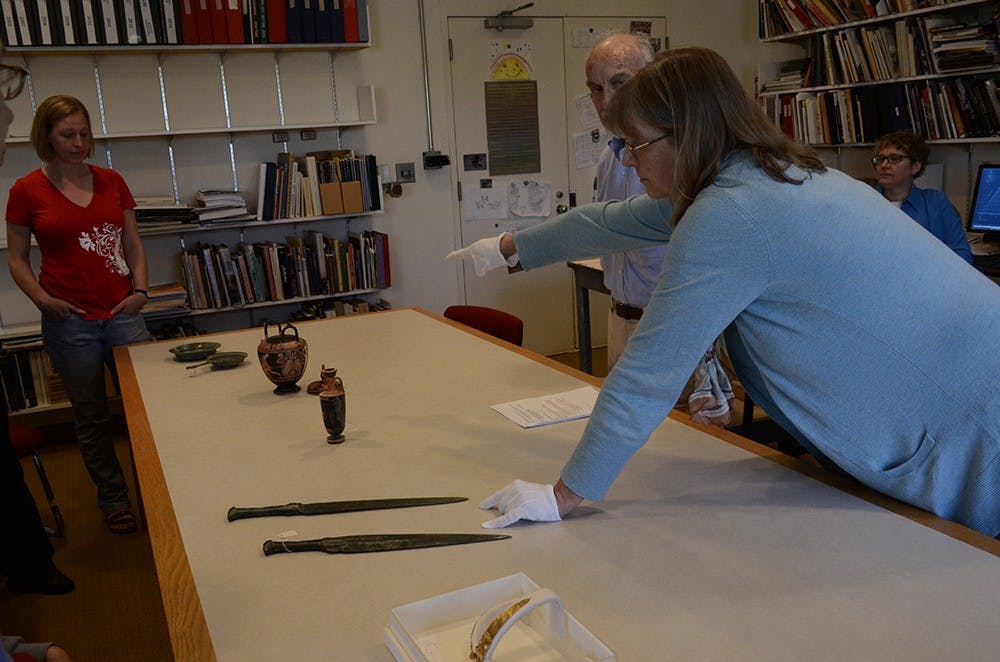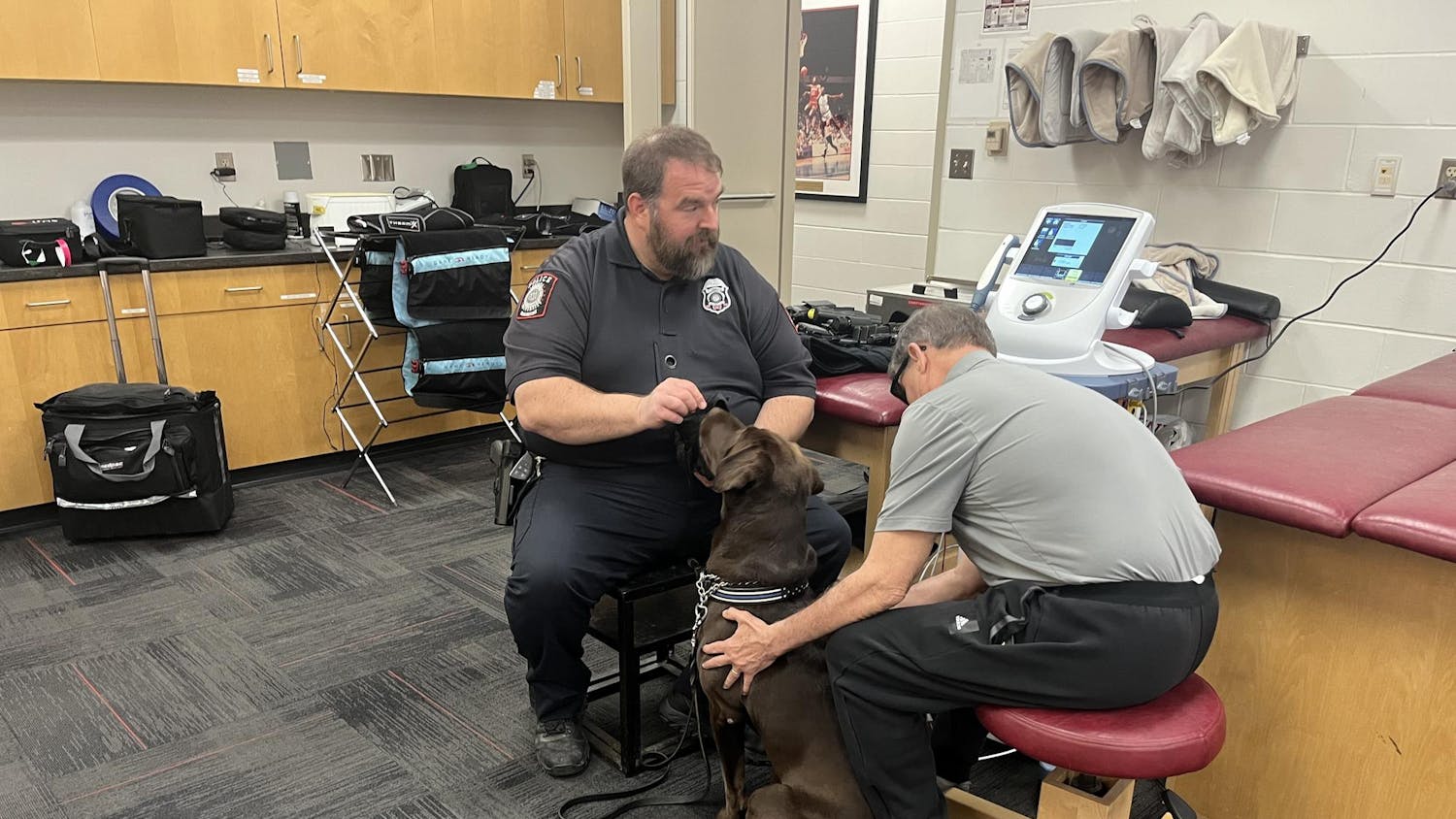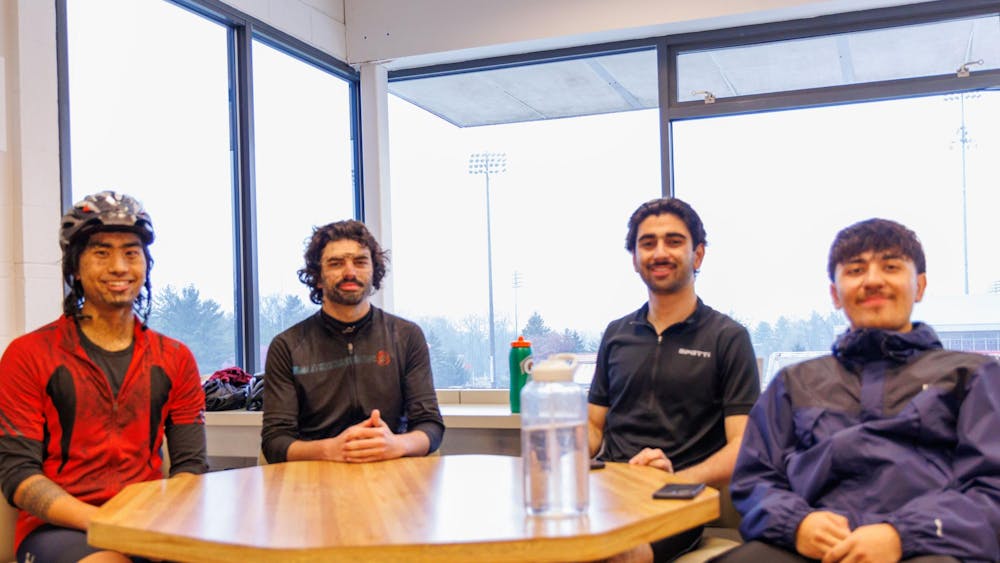Nan Brewer, curator of Works on Paper and organizer of the One-Hour Exhibit, leads the discussions.
“I will pick the topics sometimes based on the artists, sometimes based on the technique or theme or time period,” Brewer said. “Now, some of the other curators have also started participating with smaller things that they can bring up to the viewing room.”
On Friday, Juliet Istrabadi, curator of ancient art at the museum, delivered the talk for the One-Hour Exhibit “Objects of Ritual in the Ancient World.”
Istrabadi began the talk by asking the audience how they defined a ritual of any type. She then read from her own interpretation of a ritual, defined as a formal ceremony or series of acts done in a particular situation and in the same way each time.
“It can be, as you say, brushing your teeth a certain way every morning or combing your hair a certain way or being part of a procession at a church or a mosque or a synagogue or whatever,” Istrabadi said.
She said that in the case of religion, a ritual is a physical representation of a spiritual idea. The act works both on an individual level, focused on the person performing the ritual, and a communal level, focused on all those watching the actor.
Any act of religious ritual across time, Istrabadi said, is a very personal experience. This act also, however, functions as a form of transaction, a characteristic of many human relationships.
“You usually want something from a relationship or expect something from a relationship and then are expected to give something,” Istrabadi said.
Religious rituals in the ancient world, according to the theory Istrabadi draws from, is the offering of something, usually food or drink, in order for some sort of ?restitution from the gods.
Istrabadi described the ancient world as including the ancient West, the Near East and the Fertile Crescent, among other geographic areas. This specific exhibit, however, focused mainly on Greek and Roman artifacts.
“I would venture to say that all cultures had variations of what you would see here,” Istrabadi said. “In fact, when Eric pulled this selection out, I looked at him and said, ‘Well, how are we going to organize these?’ You can organize them in many ways.”
The selection, Istrabadi said, was organized based on whether the objects were used in rituals, objects of metaphysical space used for rituals or objects used to assist divination or prophecy.
Istrabadi added there is much researchers leave to conjecture or theory, as it is difficult to know with certainty what an object’s purpose was from so many years in the future.
“As I’m talking, I feel I should point out there’s so much we don’t know,” ?Istrabadi said.






